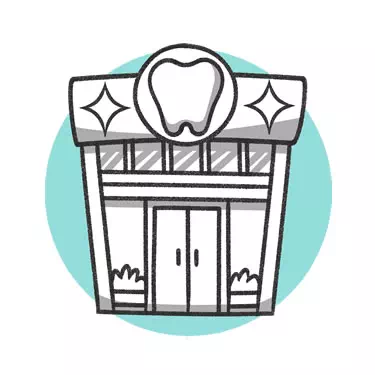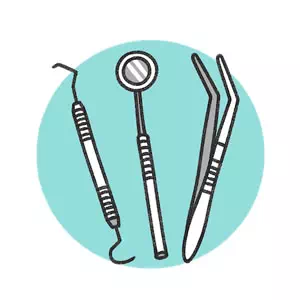Offering dental specialty services at your practice is incredibly valuable as it means you keep all services in-house, as well as all the profits. Many general practices don’t have in-house specialists, so they refer patients to a network of local specialists. While a common practice, doing this also sends potential profits and patients away. But it is understandable that many GP practices don’t have the space, budget, or talent pool to hire a specialist. This is where on-demand specialists shine. When you can hire a specialist to come into your practice a few times a month to take care of multiple patients you would normally refer out, you end up making huge profits on big procedures, while still saving money on your payroll budget.
But the big question is, HOW do you market your practice’s specialty services? It’s not as cookie-cutter as you might think. The primary thing you need to realize is that most patients seeking specialty dentistry are in a long buying cycle. This means that they need extra attention before they commit, meaning you will have to put in more work upfront — but the payoff is worthwhile. So let’s dive into short vs. long buying cycles.
Short Vs. Long Buying Cycles — What Is It?
- Short Buying Cycle Patient: A short buying cycle patient is someone who is looking for general dentistry. These are the patients that you likely see every day at your GP practice. They need routine care or treatment that can be completed in one to two visits. These patients are able to make a decision on the spot or with minimal research. Your standard marketing will draw in short buying cycle patients and your team can do the rest to convert them.
- Long Buying Cycle Patient: A long buying cycle patient is someone who is often looking for more comprehensive work. These are the patients that typically need a specialist’s care because their problems are often outside the GP range. These patients often require care that will take months to years to complete. They also tend to do their research and try to find the best place to get their procedure done. They won’t make up their mind after just visiting a website, they often need many, many “touches” to convert.
Reaching Out & “Touching” Your Long Buying Cycle Patients
If you are looking to market specialty in your GP practice, we now know that you are catering towards long buying cycle patients. To market towards these patients, you need to be in front of them often, constantly reminding them of who you are, what you offer, and what they need. This is often called a “touch.” It can take anywhere from five to eight touches to make a conversion on a long buying cycle patient! So each touch really needs to be impactful and meaningful. If your marketing is weak, then patients will start ignoring your touches. So, what is the best way to make your marketing effective? Read on!
Start With Video
It is no surprise that most patients would rather watch a video of a procedure or treatment than read lengthy articles about it. Because of this, creating your own videos is crucial in getting the ball rolling. By having your own custom videos rather than generic videos or videos from other doctors, you set yourself up as the authority. Here are some tips for what your videos should include:
- Focus on what makes you different. You’ll want to differentiate yourself from the competitors and highlight your advantages. This will make you stand out and help patients make a decision if they are deliberating between you and someone else.
- Educate the patients. Your videos should also be educational. Most of these long buying cycle patients are looking for information, so if your videos don’t tell them what they want to know, it isn’t helping them make a choice.
- Keep it short. You want these videos to be around one minute long. This serves several purposes; attention span and cross-posting on social media. Thanks to social media influence, most people have a very short attention span, so keeping these short will allow you to get your message across and share them on platforms people use frequently.
- Target your audience who want the service. Keep your videos centered around the specific service you are marketing for, and target the person who would need that. For example, if you want to promote implants, target patients with missing or failing teeth.
Create A Funnel List After The Videos Are Watched
If your videos are well produced and provide the information your ideal audience wants to watch, then you should get around a 75% view rating. The patients who viewed your video in its entirety are the patients that are most serious about the service and the ones that we want to move forward with. We want to turn these patients into our custom audience and move them forward in the funnel.
Once you have a custom audience, you’ll want to focus your marketing efforts on them, plus any other patients that might meet the same criteria as these people, called our lookalike audience. We send a form ad to this audience. This form ad is what helps us build our funnel. The form ad asks these interested patients for their information, which in turn, then gives you their contact information to begin marketing.
Starting The Funnel Campaign
If after watching the video the patient does not immediately reach out for an appointment, don’t fret! They still need more “touches” to get warmed up enough to commit. This is normal for long buying cycle patients. You’ll need patience here because if you send these prospects too many emails, texts, or videos, they will view you as spam and unsubscribe, losing them as a potential patient. It is recommended that you provide a new touch every month.
One direct touch a month is usually sufficient for most long buying cycle patients. Those who are uninterested will unsubscribe early on, but those who are serious will stick with your funnel campaign. Each month you will send these patients a new text or email with another video detailing the procedure they are interested in. By the time we get to message number five or six, these patients will have had enough time to do their research, figure out a budget, and make their decision. And guess, who will be at the top of their mind at that point? You!
Get More Specialty Patients Into Your Practice!
By following these steps and creating a funnel campaign for long buying cycle patients, you will be able to market high-dollar procedures from specialists and not have to keep sending these patients out elsewhere. Once a patient commits, you’ll then set a date and time for the procedure, hire your specialist for that day, and enjoy in-house service that makes your patients feel valued.
–
This is a long process, so getting started now is the best way to prepare yourself, your practice, and your patients for these new services. If you need help creating content for emails, texts, or videos, it’s important to work with an experienced marketing company, like SMC. This is a big endeavor to tackle and one poor email or video can ruin your entire campaign. So make sure you are putting the best content forward every time and you’ll be sure to see results!






